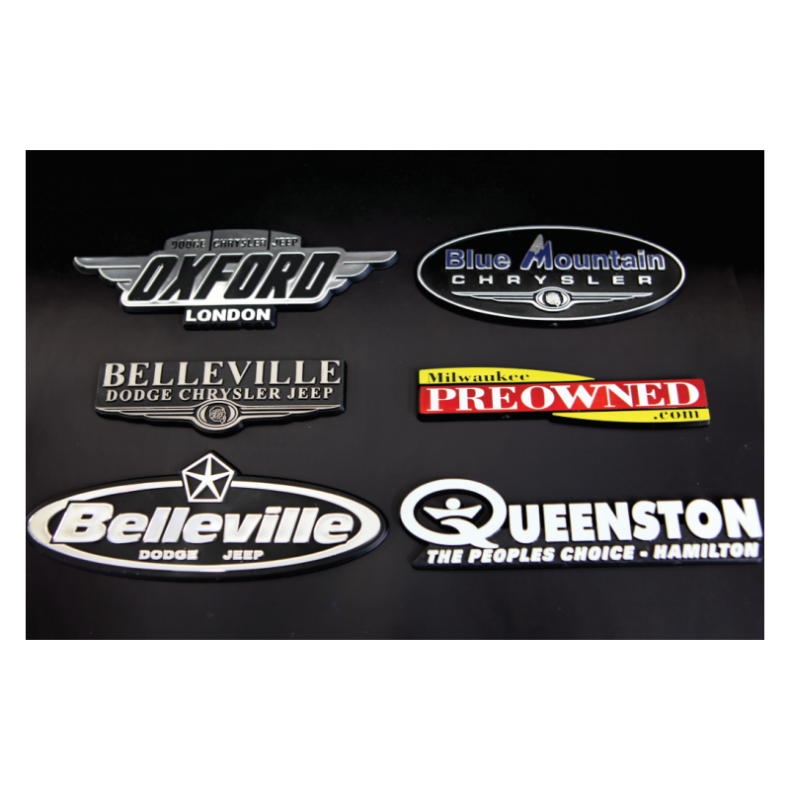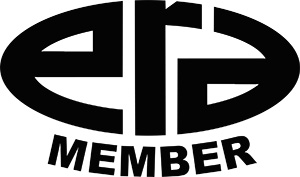Plastic Nameplates vs. Metal Alternatives: Which One Is Right for You?
Recognizing Exactly How Plastic Nameplates Job: Insights Into Their Performance and Advantages
Plastic nameplates are necessary tools for identification and interaction in various environments. Created from sturdy products like acrylic and PVC, they offer both durability and aesthetic charm. Different printing techniques improve their visibility and branding prospective. Comprehending their capability exposes not only their useful applications but additionally the benefits they bring to companies. As sectors progress, the role of plastic nameplates may shift, motivating a closer check out their ongoing importance and technology.
The Materials Behind Plastic Nameplates
Plastic nameplates are crafted from a selection of products, each picked for its one-of-a-kind buildings and viability for various applications. Typical products consist of acrylic, polycarbonate, and PVC, each offering distinctive benefits. Polymer is favored for its quality and light-weight nature, making it perfect for indoor use and screen purposes. Polycarbonate, recognized for its high influence resistance, is typically picked for environments where longevity is essential (Plastic Nameplates). PVC, on the other hand, supplies an economical solution with good weather condition resistance, suitable for exterior applications.Additionally, the option of product can affect elements such as color retention, convenience of printing, and general visual charm. This option process guarantees that the last product satisfies particular demands, whether for branding, recognition, or attractive purposes. Comprehending the residential or commercial properties of these materials assists in making informed decisions when selecting plastic nameplates for various requirements
Manufacturing Processes of Plastic Nameplates
The production processes of plastic nameplates incorporate numerous critical steps that assure quality and resilience. Secret aspects consist of product choice techniques, numerous printing techniques, and finishing and layer alternatives. Comprehending these elements is necessary for producing reliable and cosmetically pleasing nameplates.
Product Selection Strategies
Choosing the right materials for making plastic nameplates is vital for guaranteeing durability, aesthetic allure, and performance. Various plastic types are readily available, each offering one-of-a-kind residential or commercial properties fit for different applications. Polyvinyl chloride (PVC) is popular for its affordability and resistance to ecological aspects, making it ideal for outdoor use. Acrylonitrile butadiene styrene (ABDOMINAL) gives enhanced effect resistance and is typically chosen for its premium stamina and flexibility. Furthermore, polycarbonate is preferred for applications calling for transparency and high impact resistance. The option process includes considering elements such as the meant usage, ecological direct exposure, and wanted aesthetic high qualities. Eventually, mindful product selection greatly influences the efficiency and long life of plastic nameplates, satisfying varied industry requirements.
Printing Techniques Review
Product choice lays the groundwork for the succeeding printing methods utilized in producing plastic nameplates. Different methods, such as screen printing, electronic printing, and pad printing, are utilized to attain durable surfaces and high-quality layouts. Screen printing is preferred for its ability to produce lively colors and is appropriate for huge runs. Digital printing, on the other hand, supplies flexibility and accuracy, making it ideal for smaller orders with variable data or elaborate styles. Pad printing permits the transfer of images onto unequal surfaces, fitting complex forms. Each printing approach contributes uniquely to the last item's appearance and long life, ensuring that the nameplates efficiently convey the designated message and stand up to ecological aspects.
Completing and Finishing Options
Completing and finishing options play an important duty in improving the resilience and aesthetic appeal of plastic nameplates. Numerous techniques, such as UV covering, give a safety layer that resists scrapes and fading, substantially extending the item's life-span. Furthermore, laminating flooring options can provide a matte or shiny finish, enabling personalization to match branding requirements. Electroplating and anodizing are also popular techniques, including a metallic luster while boosting deterioration resistance. These finishes not only improve appearance but additionally add to the nameplate's functionality by securing against ecological factors. Specialized coatings, such as anti-graffiti finishings, guarantee that nameplates keep their legibility and visual allure in difficult conditions. As a result, the ideal finishing and coating selections can greatly boost the total worth of plastic nameplates.
Design Alternatives for Personalization
While discovering style options for modification, one discovers a broad selection of possibilities that can improve the useful and visual allure of plastic nameplates. Shade option is a main factor to consider, as vivid tones can stand out while neutral tones advertise expertise. Numerous typeface choices and dimensions in addition individualize nameplates, making certain clarity and placement with brand name identity.Incorporating logos or images adds an unique touch, strengthening organizational branding. Form modification allows for special designs, ranging from typical rectangles to extra detailed types, providing to details motifs or environments.Textures such as matte or shiny coatings can likewise influence the overall look, supplying a responsive measurement. In enhancement, the combination of attractive aspects like histories or borders boosts aesthetic interest. These customization choices jointly make it possible for companies to create plastic nameplates that effectively communicate their identification and message while satisfying useful needs.

Sturdiness and Longevity of Plastic Nameplates
Several factors affect the resilience of plastic nameplates, the selection of material and manufacturing processes plays a considerable duty in their longevity. Top quality plastics, such as polycarbonate and acrylic, are often chosen for their fundamental resistance to effect, uv, and weather condition radiation. These materials can endure extreme environmental problems without considerable destruction, ensuring that nameplates continue to be intact over time.Furthermore, advanced production techniques, such as injection molding and laser inscription, add to the toughness of plastic nameplates. These processes produce precise and durable engravings that withstand fading and wear. Furthermore, safety finishes may be used to boost resistance to chemicals and scratches, even more expanding their lifespan.Ultimately, the combination of quality products and effective manufacturing procedures guarantees that plastic nameplates maintain their performance and look for years, making them a trustworthy selection for various applications.
Applications Across Different Industries
Plastic nameplates serve a range of crucial functions across various industries. They are typically utilized for industrial devices identification, making sure clear labeling for safety and operational performance. Furthermore, they give efficient office signs options and play an important role in safety and compliance markings, highlighting their versatility and importance in diverse settings.
Industrial Tools Recognition
Efficient industrial equipment their website identification is vital throughout various fields, as it assures security, efficiency, and conformity with governing requirements. Plastic nameplates work as a vital device in this process, providing clear and sturdy recognition for equipment and tools. Industries such as building, energy, and production make use of these nameplates to display crucial info, consisting of operating guidelines, threat cautions, and upkeep timetables. Their strength to rough settings warranties that essential information continues to be easily accessible, minimizing the risk of mishaps and functional downtime. Additionally, personalized functions allow for branding and certain labeling requirements, making plastic nameplates flexible throughout applications. Overall, effective devices identification through plastic nameplates promotes a safer work environment while improving performance in varied industrial setups.
Office Signage Solutions

In various sectors, the importance of clear communication extends past commercial tools to workplace environments where signage plays an essential duty. Plastic nameplates work as effective office signs solutions, supplying crucial information such as employee names, work titles, and department designations. These nameplates boost expertise and foster a welcoming environment, aiding both personnel and visitors in maneuvering the work area. In addition, they use modification alternatives, enabling companies to straighten signs with branding and aesthetic choices. In settings like healthcare facilities, instructional establishments, and company offices, durable and clear signs warranties efficient communication and adds to business efficiency. Ultimately, the use of plastic nameplates in workplace atmospheres not only boosts quality however likewise promotes a organized and cohesive work area.
Security and Compliance Markings
While numerous companies focus on aesthetics and branding in their safety and security, conformity and signs markings are similarly important throughout numerous industries. These markings act as vital devices for communication, ensuring that workers and customers understand possible risks, safety and security protocols, and regulatory needs. In production, as an example, plastic nameplates frequently display cautioning tags and use directions to alleviate threats. In healthcare, compliance signs educates personnel regarding health techniques and equipment use, thus promoting a safe environment. In addition, the durability of plastic nameplates makes them appropriate for numerous settings, resisting deterioration from environmental variables. Generally, security and compliance markings improve functional effectiveness, advertise well-being, and warranty adherence to sector standards, making them essential in modern-day work environments.
Benefits of Utilizing Plastic Nameplates
Numerous advantages make plastic nameplates an attractive choice for organizations and companies. One key advantage is their toughness; plastic nameplates are resistant to fading, wetness, and different ecological elements, making certain longevity in varied setups. In addition, they are lightweight, making them very easy to set up and move as needed.Cost-effectiveness is an additional substantial benefit. Plastic nameplates typically call for reduced production costs contrasted to steel or timber choices, permitting organizations to preserve budgets while accomplishing expert branding. Their flexibility also stands out, as they can be customized in various forms, sizes, and colors to match branding requirements.Furthermore, plastic nameplates can be conveniently printed with high-resolution layouts, advertising clear exposure and reliable interaction. They are frequently made from recyclable products, straightening with eco aware practices. These consolidated benefits boost the capability look at this website and appeal of plastic nameplates for a series of applications in different industries.

Tips for Selecting the Right Nameplate for Your Needs
Choosing the ideal nameplate can considerably boost a company's branding and communication initiatives. To make an educated decision, one must initially think about the material. Plastic nameplates offer longevity and flexibility, making them excellent for numerous atmospheres. Next, examine the design elements, consisting of dimension, color, and font style, guaranteeing they line up with the organization's branding guidelines.Additionally, it is essential to evaluate the intended usage of the nameplate. For instance, if it needs to withstand outside conditions, picking UV-resistant alternatives is recommended. Modification is one more vital aspect; customized nameplates can reflect originality and professionalism.Lastly, budget factors to consider should not be ignored. Comparing prices throughout different vendors while considering high quality will certainly help in locating an ideal solution. By taking these components into account, companies can select a nameplate that effectively communicates their identification and objective.
Regularly Asked Questions
Can Plastic Nameplates Be Recycled After Usage?
Plastic nameplates can be recycled, depending upon the kind of plastic used and local recycling centers. Proper disposal and recycling methods add to environmental sustainability, motivating the reduction of plastic waste in landfills.
Exactly how Do I Clean and Maintain My Plastic Nameplate?

Are Plastic Nameplates Waterproof or Water-Resistant?
Plastic nameplates normally show waterproof residential or commercial properties, safeguarding them from minor moisture exposure. Long term submersion or harsh problems may jeopardize their stability. Individuals must think about details materials and coverings for improved water resistant capacities when picking nameplates
What Is the Ordinary Lifespan of a Plastic Nameplate?
The average life expectancy of a plastic nameplate normally varies from five to ten years, depending upon elements such as ecological exposure, material quality, and maintenance. Regular care can extend its functionality and appearance significantly.
Can I Order a Nameplate in a Particular Shape?
Custom form options for nameplates are usually offered with different suppliers. Customers can ask for specific layouts, making certain that the nameplate fulfills their visual and practical needs while preserving sturdiness and quality throughout its life expectancy. Product choice lays the foundation for the subsequent printing techniques utilized in generating plastic nameplates. Many elements influence the durability of plastic nameplates, the option of product and manufacturing procedures plays a substantial role in their longevity. These materials can hold up against rough ecological problems without considerable degradation, ensuring that nameplates continue to be undamaged over time.Furthermore, advanced production strategies, such as shot molding and laser engraving, contribute to the effectiveness of plastic nameplates. Plastic nameplates can be recycled, depending on the kind of plastic utilized and local reusing centers. The average life expectancy of a plastic nameplate usually varies from five to ten years, depending on elements such as ecological direct exposure, worldly high quality, and upkeep.